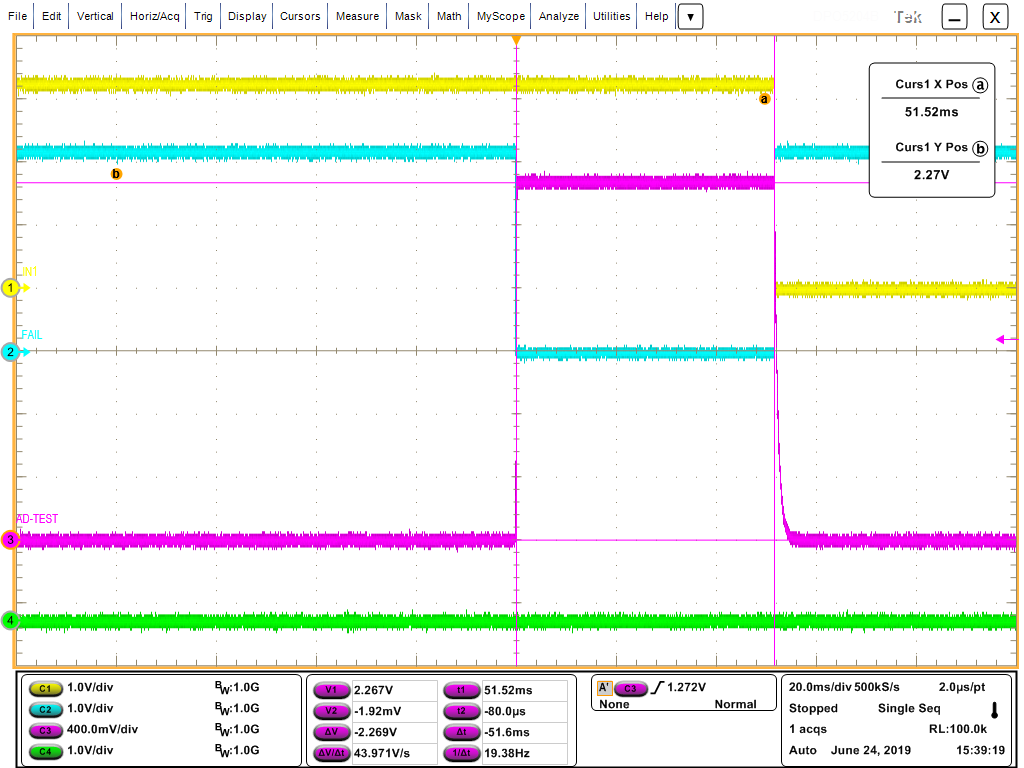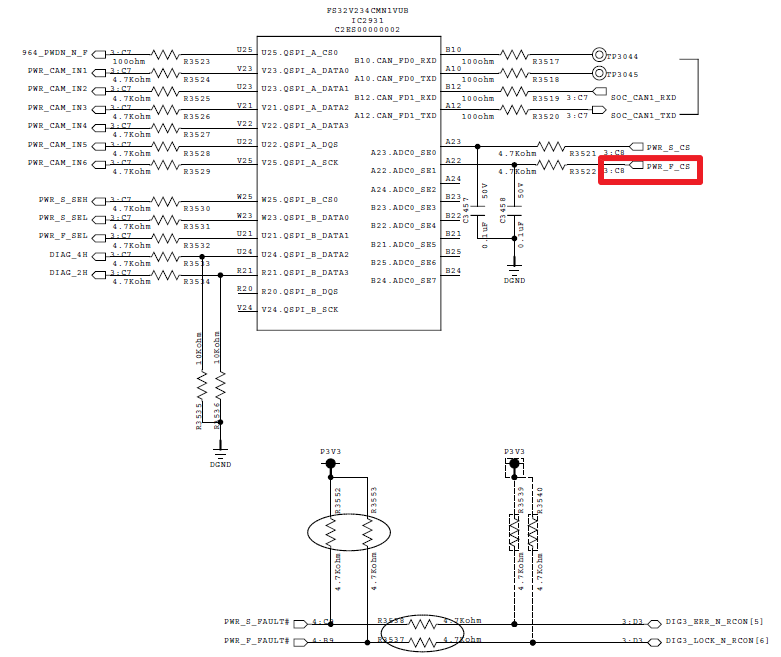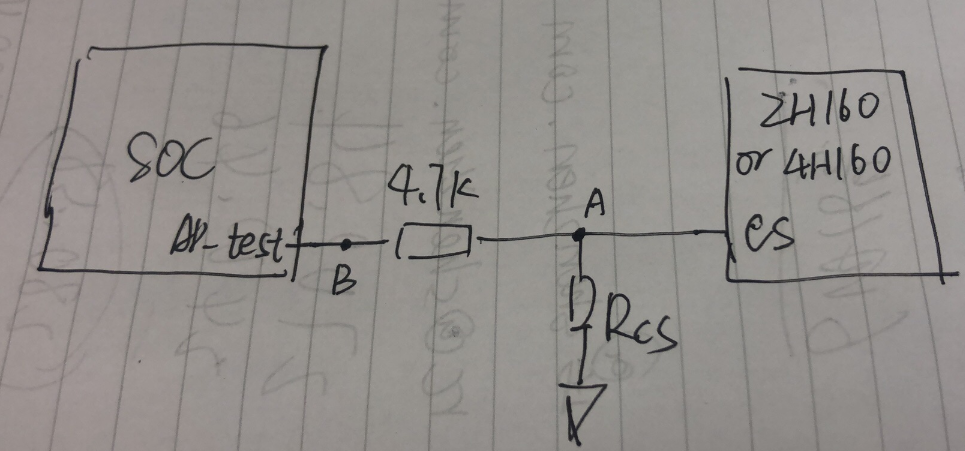Dear team,
My customer tested the TPS2H160-Q1 in their new project, but they found a problem. They set the current limit is 320mA. When they adjust the load current ups to 1A , the device is in over-current fault mode. The wave form is as below, from the picture we can see that the CS(H) is only 2.27V which is not in the normal range(4.5V-6.5V, VS=7V).
After checking, this error is caused by the SOC's pin AD_test which connected to the CS through a 4.7k ohm resistor. The AD_test pin can only sustain 1.8V max voltage, but when the fault occurs, CS(H) pin can up to 6.5V. When the connection between the CS pin and the SOC's AD_test pin is disconnected, the fault voltage of the CS pin returns to normal range.
From the test we can see that we can't connect these two pins(CS pin and AD_test pin) through a resistor directly, then how do we connect them? if this device can't work in this situation, could you please help recommend other device which can meet the requirement?
Thanks & Best Regards,
Sherry





